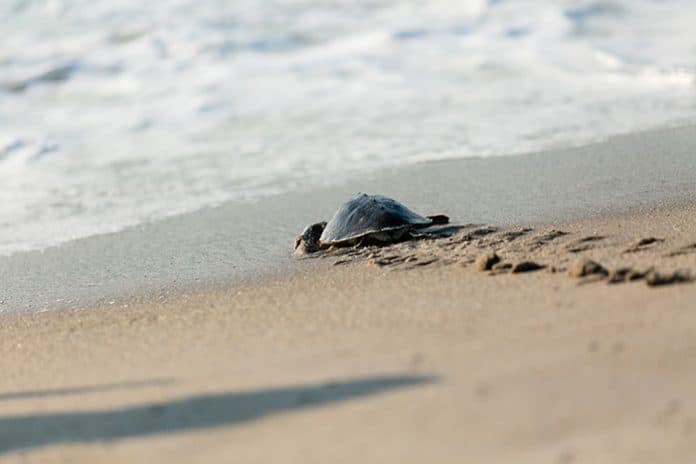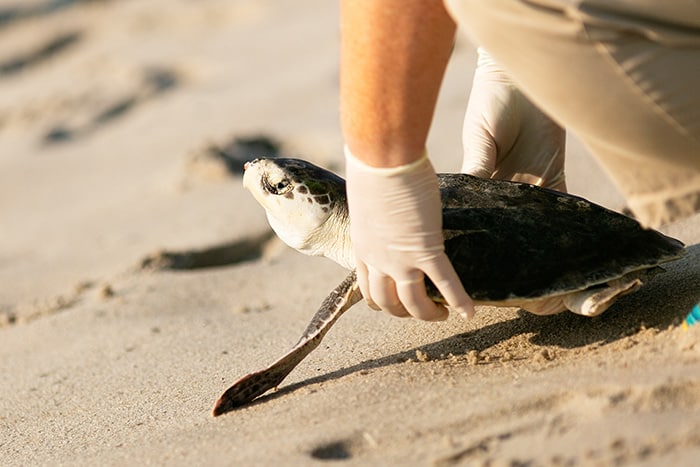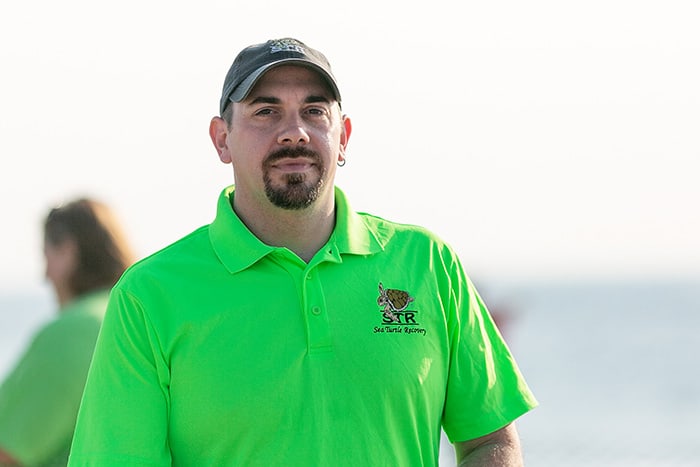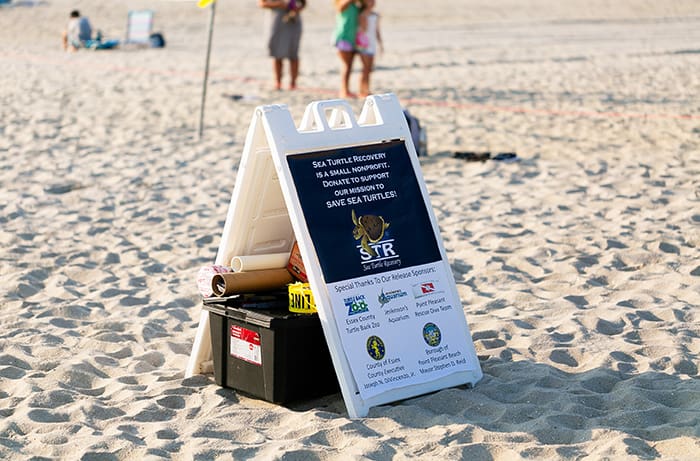
POINT PLEASANT BEACH – The crowd gathered at the ocean near Water Street drew attention from walkers on the boardwalk.
“Excuse me, miss. What is happening down there?” a man, walking with his wife on the boardwalk, stopped to ask.
“They’re releasing a rehabbed sea turtle today. You are welcome to come watch if you’d like.”
“Oh, interesting,” he said. He and his wife kept walking.
It’s a little before 7:30 a.m. July 30. At least 200 people were waiting to see Vesper, the 5-pound juvenile Kemp’s Ridley—the most endangered of all sea turtles—be released back into the ocean after recovering at the Essex County Turtle Back Zoo, Sea Turtle Recovery (STR), in West Orange. He or she is the 41st turtle STR has released since starting 2 years ago.
“We don’t actually know if Vesper is a boy or a girl. He’s too young to tell without some extensive testing that doesn’t change how we would treat his illness, so it’s not something we would put the turtle through,” STR co-executive Bill Deerr said.

Kemp’s Ridleys nest in Texas or Mexico and migrate north in the warmer months to feed before heading south again.
Vesper was found Cape Cod and taken to the Sea Turtle Rescue at the New England Aquarium in Boston. Often, when that hospital finds itself overcrowded, they will send turtles down to STR.
Vesper was found cold-stunned, “a condition in which the sea turtle’s body systems begin to shut down if the animal failed to migrate before water temperatures became too cold. It also was diagnosed with an impaction of swallowed sand, a severe ear infection, and pneumonia, all of which are now cured,” a July 29 STR statement said.
Indeed, such turtles are released only June through September at the Jersey Shore, where ocean temperatures are safe for turtles to return to.
Vesper was carried by Jenkinson’s Aquarium Director Cindy Claus down the beach just before the high-tide mark, and then gently placed on the sand before he started making his way to the water. A large wave crashed in shortly after, and Vesper disappeared in the surf to an eruption of applause from onlookers.
If Vesper is male and stays healthy, “we hope to never hear from him again,” Deerr said. “You should never see a sea turtle on the beach. So, if he washes up again, that means he’s sick.”
But if Vesper is female, “then yes, we definitely want to see those tag hits come back once she’s nesting, probably in another 10 years or so.”
According to National Geographic, Kemp’s Ridley turtles have an average life span of 50 years in the wild. They’ll grow to 2 feet and 100 pounds. Females, sexually mature at around age 12, nest every 1 to 3 years.
Deerr and co-executive Brandi Biehl founded the nonprofit STR in 2014, and with the help of generous corporate donors, opened their 4,000-square-foot care facility at Essex County Turtle Back Zoo in 2016. They remain an independent nonprofit with two full-time staffers, a part-time veterinarian, and volunteers.

“All the sea turtles in the world are either threatened or endangered,” Deerr said. “The species we released today is critically endangered. There aren’t many of those left in the world today.
Deerr continued: “The vast majority of the effects that are affecting their population are human caused. You have poaching, fishing interactions, beach development, all those things come in to play and taking away their nesting habitat. Activities on the water can impact them as well. Pollution is a huge issue. I know everybody talks about it all the time, but we see turtles with plastic ingestion on a regular basis. It’s not a rare thing.”
And, turtles get sick like everyone else. They treat turtles with respiratory infections and cold-stun—the illness that brought Vesper to them—and illnesses that set in after that.

Depending on the type and severity of the problem, turtles have stayed at STR from 3 months to 15 months, though Deerr knows of cases where turtles have had to stay in other hospitals for 4 years before being released.
To continue their work, STR does depend on donations. Anyone interested in donating can visit seaturtlerecovery.org for more information.
Day to day, Deerr said people can help by putting trash where it belongs (hint: not the ocean), recycling and reducing their consumption of single-use plastics.
“It really is something simple that people can do. It’s just a matter of changing your habits, and you can make those changes in your day-to-day life and it has a huge impact on our environment, not just sea turtles.”







